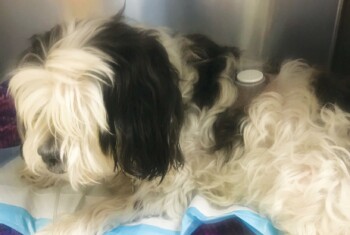BluePearl initially published this article in 2016 when e-cigarettes and vaping were making news as an alternative to the more popular and conventional cigarette. Recently, e-cigarettes have been back in the headlines, with a number of deaths reported throughout the country as a result of people vaping. We’d like to share the article again.
Nicotine Overdoses Increase Vet Emergency Hospital Admissions
E-cigarette ingestion/exposure poses a serious risk to pets.
The primary concern with the ingestion of e-cigarettes has to do with the ingestion of its ingredient, nicotine. Each cartridge packs a powerful punch, containing anywhere from 6 to 24 mg of nicotine; in contrast the average cigarette contains approximately 12 mg of nicotine. Although the e-cigarette resembles the traditional cigarette, e-cigarettes work by atomizing liquid (containing nicotine) into a vapor that can be inhaled.
Many people who use these products also enjoy the different flavors and varieties that these products come in, ranging from peppermint to cherry. The aroma or scent of these e-cigarette cartridges is what makes them a popular target among pets. Pets are drawn to these different scents and, in many reported cases, ingest the flavored nicotine liquid.
In addition to the increased nicotine content of these products, vials of liquid nicotine, called “e-liquid,” are often available to refill cartridges. This added danger makes intoxication almost guaranteed, whereby pets are likely to show severe clinical signs up to and even including death.
According to Pet Poison Helpline, a 50-lb dog ingesting a single cartridge will often show clinical signs; whereas consumption of the same quantity by a 10-lb dog will often result in death. On the other hand, signs may vary with partial consumption. In addition, consumption of e-cigarettes, and or any of their parts may result in severe gastroenteritis or gastrointestinal obstruction.
Clinical Signs
The onset of clinical signs is rapid, with pets showing signs such as vomiting, diarrhea, tachycardia, tachypnea, neurologic signs like tremors, ataxia, weakness, and seizures, in as little as 15 minutes. Cardiac arrest and even death is observed as well. Delayed signs have been documented especially with cutaneous exposures. Below is a listing of clinical signs by the system affected:
- Gastrointestinal: vomiting, hypersalivation, diarrhea, abdominal pain/discomfort
- Cardiovascular: hypertension, cardiac arrhythmias
- Neurologic: ataxia, weakness, mydriasis, seizures
- Pulmonary: initial tachypnea followed by respiratory depression
Diagnosis
The diagnosis is often made possible by a history inclusive of exposure to nicotine and is often suggested by the combination of clinical signs with their acute onset. Differential diagnoses should include other potential toxicants with similar clinical signs. Metaldehyde, bromethalin and methylxanthine products; insecticides (carbamates, organophosphates), strychnine, mycotoxins, and toxic mushrooms are among the most common. Bloodwork is often non-specific, with some pets showing hyperkalemia. More advanced laboratory analysis of blood and vomitus, such as HPLC, or mass spectrometry is possible, although often not feasible given the time it takes to send off these samples to a reference laboratory.
Treatment
Although there is no specific antagonist treatment for nicotine intoxication, treatment is aimed at controlling signs of respiratory distress, cardiac arrhythmias, cardiovascular collapse, shock and general supportive care with intravenous fluids, gastroprotectants, anti-emetics and oxygen therapy. Cutaneous or ocular exposure should include decontamination of the affected surface with copious amounts of a lavage solution (ocular), or bathing with soap and water (cutaneous).
If a known ingestion occurs, immediate veterinary care is recommended. At-home care is not recommended due to the rapid onset of clinical signs and severity of symptoms. It is recommended that owners take their pets to the closest emergency clinic.


